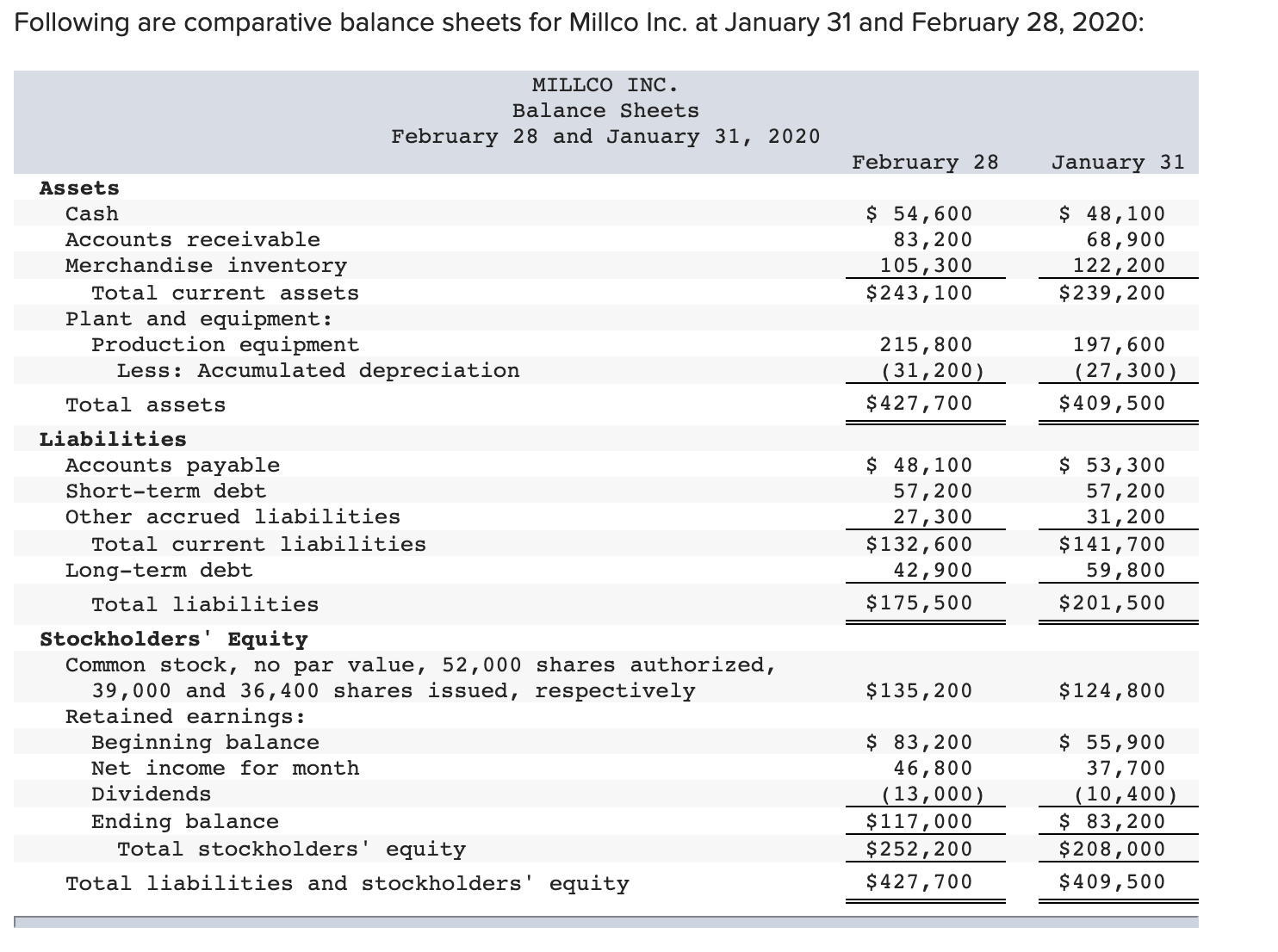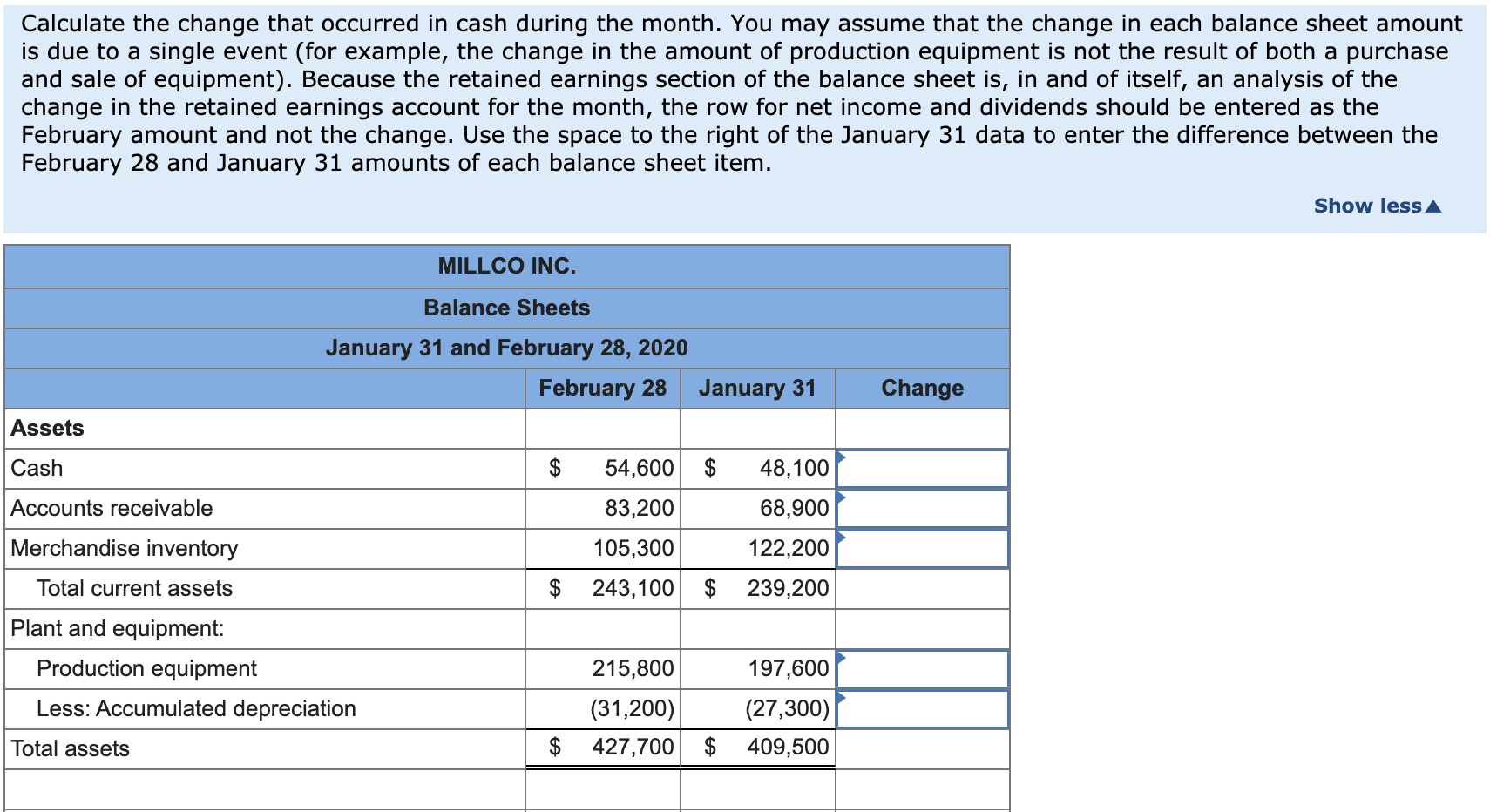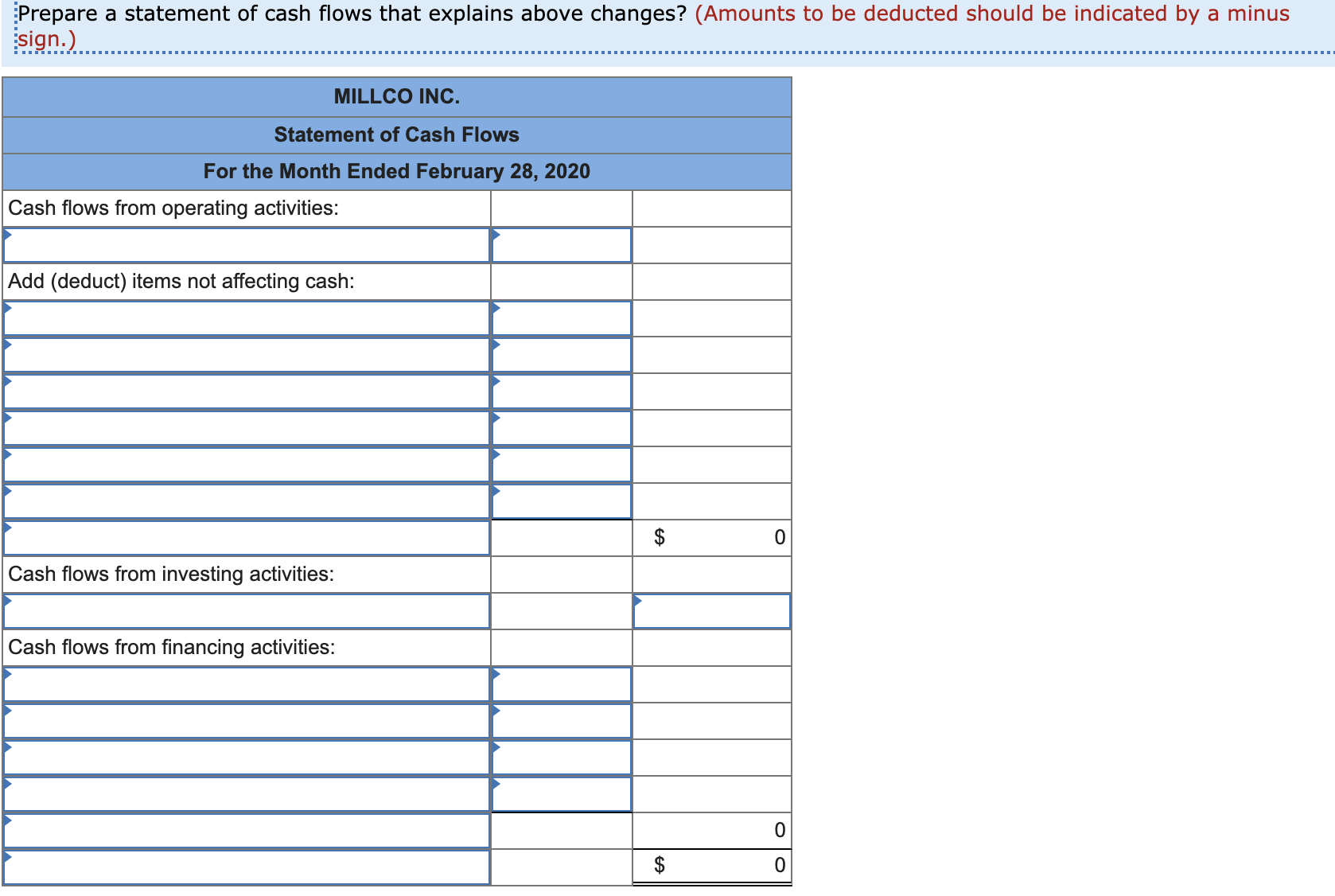




Following are comparative balance sheets for Millco Inc. at January 31 and February 28, 2020: MILLCO INC. Balance Sheets February 28 and January 31, 2020 February 28 January 31 $ 54,600 83,200 105,300 $243, 100 $ 48,100 68,900 122,200 $ 239,200 215,800 (31,200) $427,700 197,600 (27,300) $409,500 Assets Cash Accounts receivable Merchandise inventory Total current assets Plant and equipment: Production equipment Less: Accumulated depreciation Total assets Liabilities Accounts payable Short-term debt Other accrued liabilities Total current liabilities Long-term debt Total liabilities Stockholders' Equity Common stock, no par value, 52,000 shares authorized, 39,000 and 36,400 shares issued, respectively Retained earnings: Beginning balance Net income for month Dividends Ending balance Total stockholders' equity Total liabilities and stockholders' equity $ 48,100 57,200 27,300 $132,600 42,900 $175,500 $ 53,300 57,200 31,200 $141,700 59,800 $ 201,500 $135, 200 $ 124,800 $ 83,200 46,800 (13,000) $117,000 $252,200 $427,700 $ 55,900 37,700 (10,400) $ 83,200 $208,000 $409,500 Required: a. Calculate the change that occurred in cash during the month. You may assume that the change in each balance sheet amount is due to a single event (for example, the change in the amount of production equipment is not the result of both a purchase and sale of equipment). Because the retained earnings section of the balance sheet is, in and of itself, an analysis of the change in the retained earnings account for the month, the row for net income and dividends should be entered as the February amount and not the change. Use the space to the right of the January 31 data to enter the difference between the February 28 and January 31 amounts of each balance sheet item. b. Prepare a statement of cash flows that explains above changes? Calculate the change that occurred in cash during the month. You may assume that the change in each balance sheet amount is due to a single event (for example, the change in the amount of production equipment is not the result of both a purchase and sale of equipment). Because the retained earnings section of the balance sheet is, in and of itself, an analysis of the change in the retained earnings account for the month, the row for net income and dividends should be entered as the February amount and not the change. Use the space to the right of the January 31 data to enter the difference between the February 28 and January 31 amounts of each balance sheet item. Show less MILLCO INC. Balance Sheets January 31 and February 28, 2020 February 28 January 31 Change Assets Cash $ 54,600 $ 48,100 Accounts receivable Merchandise inventory 83,200 68,900 105,300 122,200 $ 243,100 $ 239,200 Total current assets Plant and equipment: Production equipment Less: Accumulated depreciation 215,800 (31,200) $ 427,700 197,600 (27,300) $ 409,500 Total assets Liabilities Accounts payable $ Short-term debt Other accrued liabilities 48,100 $ 57,200 27,300 132,600 $ 42,900 175,500 $ 53,300 57,200 31,200 141,700 59,800 201,500 Total current liabilities $ Long-term debt Total liabilities $ Stockholders' Equity Common stock $ 135,200 $ 124,800 Retained earnings: Beginning balance Net income for month Dividends Ending balance Total stockholders' equity Total liabilities and stockholders' equity $ 83,200 $ 55,900 46,800 37,700 (13,000) (10,400) $ 117,000 $ 83,200 $ 252,200 $ 208,000 $ 409,500 Prepare a statement of cash flows that explains above changes? (Amounts to be deducted should be indicated by a minus sign.) MILLCO INC. Statement of Cash Flows For the Month Ended February 28, 2020 Cash flows from operating activities: Add (deduct) items not affecting cash: 0 Cash flows from investing activities: Cash flows from financing activities: 0 $ 0











